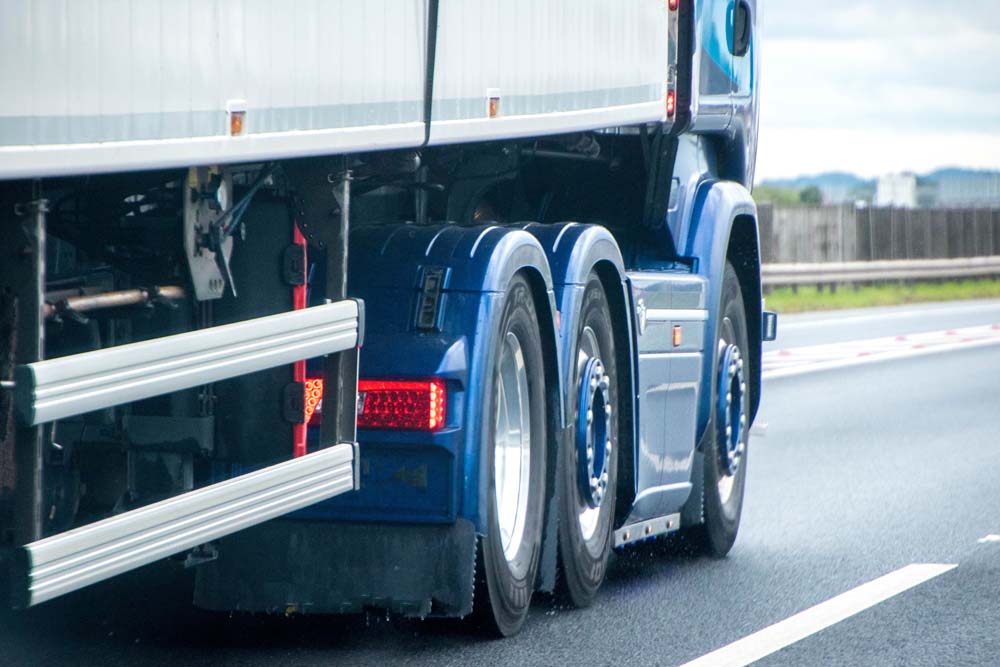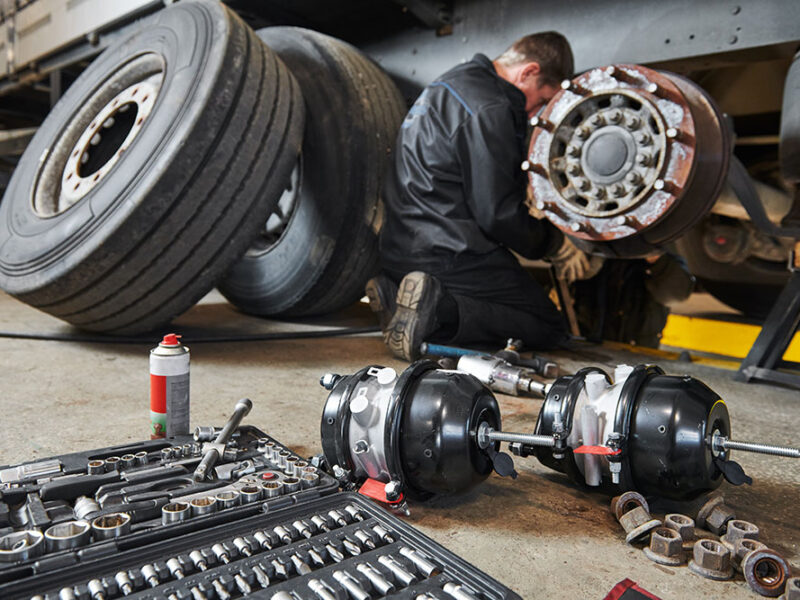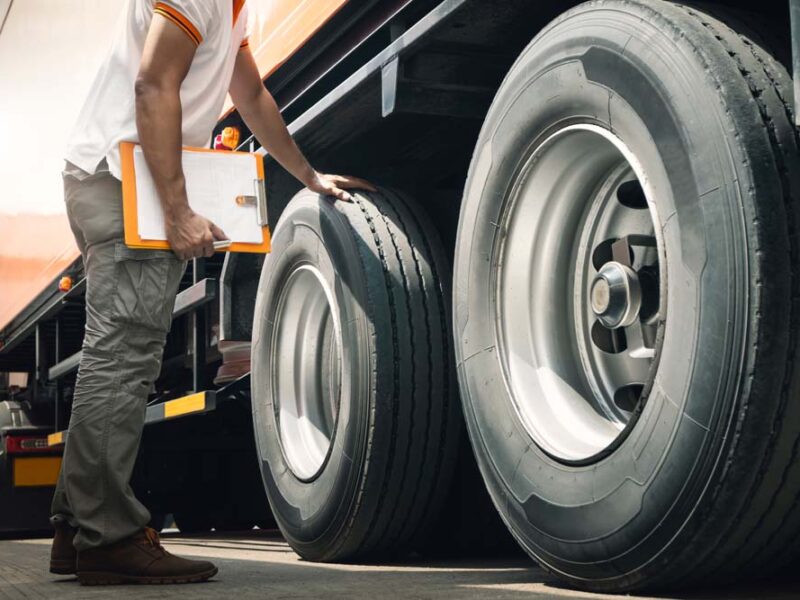For decades, many categories of "specialised" heavy vehicles have been exempt from the requirements to have a valid Goods Vehicle Testing Certificate as well as to have plates fitted which display the limits set for their maximum operating weights (both, of which, have long been standard fair for most heavy goods vehicles). Now the law has caught up and from 20th May 2018, a number of these categories of specialised vehicles will lose their automatic testing and plating exemptions.
Why Change the Law?
The rationale for the changes - which are the result of EU Directives dating from 2009 and 2014 - is straightforward: many classes of specialised or particularly old vehicles which in years gone by were regarded as being "untestable" because of the way they were constructed are now built to more standardised design, with many being based upon standard goods vehicle chassis. There are fewer practical differences between these vehicles and ordinary heavy goods vehicles and partly as a result of this standardisation, there are far more of them on the road. Until now, these specialist types of vehicles have not been subject to the same stringent testing and weight-limiting restrictions as other road-going vehicles, with a somewhat predictable outcome: Department for Transport ("DfT") statistics indicate that vehicles which are exempt from testing are more likely to be involved in accidents which are caused or contributed to by defects which, for testable vehicles would result in their failure at the annual test.
What Will Change?
The piece of legislation which brings about the changes in question is The Goods Vehicle (Plating and Testing) (Miscellaneous Amendments) Regulations 2017. In total twelve classes of vehicle based on goods chassis that had previously been exempt from the requirement to hold a Goods Vehicle Testing Certificate will no longer benefit from that exemption. The first eleven classes of specialist vehicle that will no longer by exempt are as follows:
- Mobile Cranes
- Breakdown Vehicles
- Engineering plant and plant, not being engineering plant, which is movable plant or equipment being a motor vehicle or trailer (not constructed primarily to carry a load) especially designed and constructed for the special purposes of engineering operations.
- Trailers being drying or mixing plant designed for the production of asphalt or of bituminous or tarmacadam.
- Tower wagons
- Road construction vehicles (but not road rollers and other specialised equipment not based on an HGV chassis).
- Electrically propelled motor vehicles first registered since 1st March 2015.
- Tractor units pulling exempt trailers.
- Motor tractors and heavy and light locomotives exempted under sections 185 and 186 (3) of the Road Traffic Act 1988, where these are based on a HGV chassis.
- Heavy goods vehicles and trailers on the Isle of Bute
- Heavy goods vehicles and trailers on Arran, Great Cumbrae, Islay, Mull, Tiree,or North Uist, which are used on mainland Great Britain.
Additionally, and following a separate government consultation on Vehicles of Historical Interest, the twelfth category no longer benefiting from the exemption will be:
12. Motor vehicles manufactured before 1st January 1960 used unladen and not drawing a laden trailer, and trailers manufactured before 1st January 1960 and used unladen that have been substantially altered.
Subject to any general exemptions that apply to heavy goods vehicles, each of these classes of vehicle will be required to undertake and pass an annual test and obtain a Goods Vehicle Testing Certificate. The vehicle classes above which will now fall in-scope of the new testing requirements will, generally, also be required to be plated by default (because the testing process requires the presence of a plating certificate) - however, this requirement is subject to certain exemptions.
Plating Exemptions
One of the outcomes of the government consultation process which led to the implementation of the new legislation was a general acceptance that in the cases of certain vehicle types, determining the plated weight is simply too difficult and impractical. For that reason, the Driver and Vehicle Standards Agency ("DVSA") has a discretionary power to allow these vehicles to undergo an annual test without a plate. Upon application for a first annual test, DVSA will issue a plating certificate where applicable for the class of vehicle to be tested.
Separately to that, volumetric concrete mixers currently retain a specific exemption from plating requirements (consultations on plating for these vehicles are ongoing).
Phased Roll Out
The law came into force on 20th May 2018, and the default position is that any vehicle falling into one of the 12 categories above will be required to have undertaken a first annual test by then. However, in order to allow the industry to stagger the testing of vehicle fleets and avoid a "bunching" effect, the DfT has imposed two separate deadlines by when newly in-scope vehicles need to have obtained a Test Certificate: the first being 20th May 2018 and the second being 20th May 2019 or the date when the vehicle's Vehicle Excise Duty falls due for renewal, whichever date comes first.
The classes of vehicles which must have obtained a Test certificate by 20th May 2018 are volumetric concrete mixers, fast tractors (i.e. those with a design speed over 40km/h and which are used for non-agricultural haulage covering distances greater than 15 miles from their usual operating base), any trailers losing the exemption and any vehicles used on international journeys.
As above, all other vehicles must have undertaken a first Test by either 20th May 2019 or the date the vehicle's tax is due - whichever comes first.
In order to ensure that the safety of vehicles that are eligible to take advantage of the phased roll-out is not compromised by the delay in the requirement to be tested, operators will be required to produce on demand the most recent regular safety inspection records, with those inspections being required to be undertaken by competent mechanics and in accordance with DVSA inspection guidance published in the Guide to Maintaining Roadworthiness (now updated in a new 2018 edition).
What Should Operators Do Next?
Operators of vehicles included in the list above need to act quickly and should take the following steps:
- Check whether the class (or classes) of vehicles operated fall within those which must have a Test Certificate by 20th May 2018, or are eligible for the phased roll-out;
- Complete and submit form VTG1 in respect of each vehicle due to undergo its first Test. Doing so will produce a record and, where appropriate, a plating certificate - both are needed before a Test can take place, and a failure to do so runs the risk of vehicles being refused for testing);
- Contact an ATF facility to book the Test. This should be done in good time before the applicable deadline - any use of vehicles used on a road after the applicable deadline without a Test Certificate will be unlawful use.
- Ensure the quality of maintenance arrangements. In particular, operators of vehicles eligible for the delayed Test Certificate deadline must ensure that regular safety inspections are carried out in accordance with DVSA guidance - but in all cases, proper maintenance arrangements with robust quality control procedures ought to be in place.
For more detailed information on vehicle testing and plating requirements, see the Plating and Testing legislation and the Croner-I employer factsheet on vehicles that are no longer exempt from annual testing.
Copyright: Richard Pelly. First published in UK by Corner-I.

More News and Insight

Labour Government – Employment Rights Bill – What Will It Mean for Transport Businesses?
In October 2024 the Deputy Prime Minister, Angela Rayner set out her intention to reform the employment rights held by employees in the UK. In a press release issued at the time she is quoted a saying…

Revisiting the DVSA’s Guide to Maintaining Roadworthiness
In April 2025 the Driver & Vehicle Standards Agency (DVSA) issued the latest edition of its Guide to Maintaining Roadworthiness.

The Wheels on the Bus go Round & Round….but how do they Stop?
At the tail end of 2024 a Public Inquiry was held in front of Traffic Commissioner Kevin Rooney where the subject of brake maintenance practices was called into question…

Maintenance Provision Rating Scheme for Commercial Vehicle Workshops is Launched
One of the key tenants of running a commercial vehicle operation, whether ‘HGV’ or ‘PSV’ is that the maintenance of the vehicles is paramount. For some operators this will mean having their own maintenance facilities and teams to look after their fleet of vehicles in house, but the majority of operators in the UK are reliant on 3rd Party maintenance providers…

Changes to Brake Safety Inspections for Commercial Vehicles – April 2025
In April 2025 the brake testing regime guidance will change. Roller Brake Tests, that have been mandatory for years, will be joined by an Electronic Break Performance Monitoring System or EBPMS…

Case Study – Public Inquiry for Gillbard Plant, Autumn 2024
Gillbard Plant was called to Public Inquiry in Autumn 2024. The hearing made headlines in the transport press due to the element of “DVSA Poacher turned Game-keeper” of Gillbard Plant’s Transport Manager, Mr. Anthony Brayley-Willmetts, a former DVSA (VOSA) examiner turned transport consultant…

DVSA Load Security Guidance – Updated December 2024
When carrying loads on lorries every HGV Operator knows how important it is to ensure that goods are secured safely so that they arrive at their destination in good condition and that they do not cause any damage or danger on the UK’s roads during the process of transporting them…

New Rules for Vehicle Operators and Drivers Carrying Out International Journeys
The Department for Transport and the Driver and Vehicle Standards Agency recently issued a bulletin regarding the new rules that vehicle operators and their drivers will have to comply with if travelling on international journeys…

Road Haulage Association Members and DVSA Leadership Work Shadow Each Other!
To help highlight the Road Haulage Association’s “National Lorry Week” which this year was between 4th and 8th November 2024, the Road Haulage Association and the DVSA’s Leadership team decided to spend some time work shadowing each other….

2024 Update to Guide to Maintaining Roadworthiness (GTMR)
The Guide to Maintaining Roadworthiness is the Driver & Vehicle Standard Agency’s (DVSA) standard produced in collaboration with key industry stake holders which explains the responsibilities and systems involved in maintaining vehicles in a roadworthy….

New Driver CPC Reforms to be in Force from 3rd December 2024
Following a very lengthy consultation period on this matter launched in early 2023, Parliament finally debated the “Vehicle Drivers (Certificates of Professional Competence) (Amendment) Regulations 2024” on Tuesday 29th October 2024…

When Sat Nav’s Lead Lorries Astray!
Lorries getting into trouble and causing chaos in the small country roads of Great Britain have been making headlines again. Whilst a lot of this content is amusing and no doubt is a winner with internet audiences there is a very serious side to these incidents…
